I’m at a weekend retreat in a converted church near Amsterdam. There is soft, celestial music playing and I’m sipping fresh herbal tea while discussing my hopes and fears for tomorrow’s “ceremony,” which is retreat parlance for a psychedelic trip. Consuming the truffle parts of magic mushrooms is permitted in the Netherlands and my nine fellow guests and I will be eating a variety called Dragon’s Dynamite.
We’re not taking recreational drugs, but rather using psychedelics as self-exploratory and therapeutic “plant medicine.” Welcome to the age of the psychedelic retreat.
Synthesis opened its doors in April last year. It was co-founded by Martijn Schirp, a former poker player who found salvation through psychedelics.
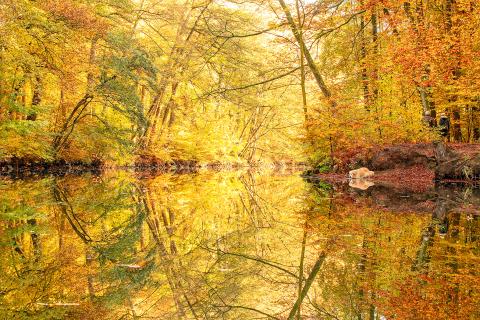
Photo: AFP
“I had my first mushroom trip nine years ago and that changed my life,” he says. “I was walking through this forest and it was so peaceful, it was like a fairy tale. I felt this huge self-critical voice lift off me.”
Schirp believes he’d still be estranged from his father if it wasn’t for the perspective psychedelics have given him. His entrepreneurial mind saw that what was missing was a retreat with “medical supervision, private one-to-one coaching and professional standards in a modern context”.
There is no governing body for psychedelic retreats nor are there official figures for the number of retreats around the world, with many held illegally.
Schirp estimates there are a dozen or so legal mushroom retreats in the Netherlands, including events also run in the country by the UK-based Psychedelic Society. Its prices for a four-day retreat range from £600 (US$777) to £1,400, depending on your income. Synthesis charges £1,640 for a three-day programme aimed at beginners.
“We introduce psychedelics to people who can benefit from them, but who wouldn’t normally feel safe or be open to them. Most people are still not aware that retreats like this exist. They go through the underground or try to join one of the academic studies,” Schirp says.
SOCIAL ACCEPTABILITY
There is an abundance of studies, following a pioneering one by Imperial College in 2016, that have examined the therapeutic effects of magic mushrooms on severe depression. The US Food and Drug Administration recently designated a new psilocybin drug a “breakthrough therapy.”
It’s being developed by UK-based Compass Pathways, which hopes it will be available on the pharmaceutical market within five years.
It’s perhaps unsurprising that the trend for micro dosing on psychedelics is edging closer to social acceptability, despite its widespread illegality. Those keen to experience higher doses under guidance are increasingly traveling to retreats held in countries such as Jamaica, Costa Rica, Peru and the Netherlands.
At Synthesis, guests are encouraged to bring three intentions, which might be issues or conflicts that need attention, or, as in my case, a scientific curiosity to explore a different state of consciousness.
During the trip, a medic loiters in the living room, but she’s there more for reassurance than necessity. Magic mushrooms are considered the safest and least toxic of illegal recreational drugs. The Global Drugs Survey, conducted by an international panel of researchers and academics, this year analyzed data from 123,814 respondents and found that magic mushrooms required the least medical attention, with just 0.4 percent of users reporting that they sought emergency medical treatment.
Their effects on the mind, however, are hard to predict, and as recent clinical trials for treatment resistant depression at Imperial College revealed, while some patients are barely affected others have stronger psychedelic experiences on low doses than on a high dose. With trials ongoing, there remain many unknowns. I’m not advocating this for everyone but on a personal level, I was keen to give it a go.
Guests arrive on Friday afternoon. Some are retreat regulars returning for a top-up, or hoping to go deeper, but for most this is their first trip. Attendees travel from all over the world and include doctors, academics, engineers and retirees. We sit in a circle to share our reasons for coming. This is unfamiliar territory for me. I’m an introvert and a stranger to therapy speak.
Being here without the comfort blanket of our usual lives and routines, layers of self-defence soon start peeling away before we’ve even gone near the magic mushrooms. We are briefed as a group on potential forms our journeys might take: we might be gripped by a strange energy and start shaking or we might get the “nada” — a state of lack in which it feels as though nothing is happening.
If the trip becomes challenging (the phrase “bad trip” has been retired by the psychedelic community), our hosts assure us they will see it in our faces and help us to relax and breathe through it. Wherever the trip takes us, the idea is that it’s a lesson of some kind. The facilitators press this point firmly with an air of tough love. Our mantra: trust, let go, be open.
The ceremony begins around midday on Saturday. We assemble silently, clutching duvets and pillows from our beds. There are flowers, candles and smouldering herbs. The facilitators are dressed in white, the room is flooded with sunlight and birdsong drifts in from the garden.
Mattresses are arranged in a circle and once everyone is settled, the truffles are served, accompanied by raisins and ginger tea for palatability.
The formality and sudden solemnity makes me feel claustrophobic, and I don’t like the look of my ugly, greenish-brown truffles. I have chosen the lowest of the three dose options, but there seem to be loads in my bowl. I’m reassured that there is no pressure for me to eat them. I relax and start nibbling. Then I recline, eye mask on, and swirl off into the music. For the next six or so hours I float along with the songs, occasional gong bonging and other sensory stimuli provided by my hosts.
MAGICAL FEELINGS
The magical feelings come in waves. First, I am lying under a delicate yellow dome formed of living, breathing geometric patterns. I take a stroll around my surprisingly empty cathedral-like mind, enjoying its decluttered state. I spin off into a wild appreciation of language. All the trivial insecurities and frustrations to do with work fall away and I am part of the vast web of all humans communicating through language, music and art. I have a bit of a cry at the beauty of us all.
The facilitators said we’d all cry at some point. This comes as no surprise to Katrin Preller, who uses brain imaging to study the effects of psychedelics at the University of Zurich. She has observed “a loosening up of self-focus. People seem to get more open and more empathetic to others,” she says, “and feel more connected with nature and their environment.”
Hannes Kettner, a research assistant at Imperial College, has been studying people’s psychedelic experiences in recreational and retreat settings since 2017. While most psychedelic experiences result in increased wellbeing, he says, “these guided experiences are more robust in the way that people benefit. We have more solid increases in guided settings compared to when people might be at a festival, at home or in nature. We’re finding that experiences of emotional breakthrough depend on the presence of emotional support during ceremonies.”
More recently Kettner has started working directly with retreat centers.
But the rapid growth of this unregulated industry introduces risks.
“It’s not the same standards everywhere,” says Kettner.
Laura Dawn, a US plant medicine devotee attending Synthesis, has heard horror stories in her 20 years of running and attending retreats, often at the shamanist ceremonies that use ayahuasca. “It’s a whole mixed bag and people need to know how to navigate these realms.”
The final day of the retreat is designed to prepare us for integrating our epiphanies into our lives. “The work starts here,” we are told.
We are encouraged to continue focusing on self care, to write down our thoughts and to meditate. The group is tired and emotional. One of us had thrown up their truffles, missing out on the trip. Everyone else is sharing profound experiences.
Returning to the shackles of modern life is a little rough. I notice that my brain feels slow and spongy for a week or two, but I’m told this is nothing to worry about.
“It’s not just a fun ride, it’s an exhausting experience, too. It takes a bit of time to recover,” Preller says. Two months later, not only am I back to my old self, but I think I might be more myself than ever.
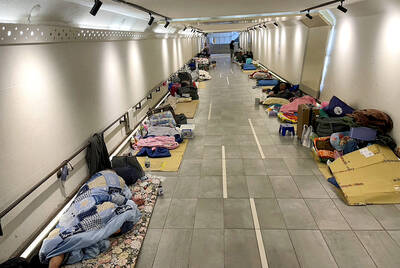
From the last quarter of 2001, research shows that real housing prices nearly tripled (before a 2012 law to enforce housing price registration, researchers tracked a few large real estate firms to estimate housing price behavior). Incomes have not kept pace, though this has not yet led to defaults. Instead, an increasing chunk of household income goes to mortgage payments. This suggests that even if incomes grow, the mortgage squeeze will still make voters feel like their paychecks won’t stretch to cover expenses. The housing price rises in the last two decades are now driving higher rents. The rental market
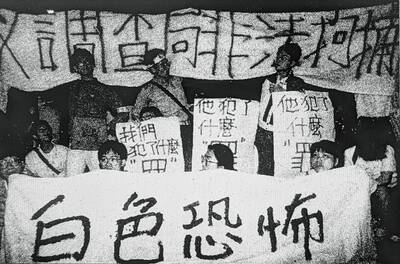
July 21 to July 27 If the “Taiwan Independence Association” (TIA) incident had happened four years earlier, it probably wouldn’t have caused much of an uproar. But the arrest of four young suspected independence activists in the early hours of May 9, 1991, sparked outrage, with many denouncing it as a return to the White Terror — a time when anyone could be detained for suspected seditious activity. Not only had martial law been lifted in 1987, just days earlier on May 1, the government had abolished the Temporary Provisions Effective During the Period of National Mobilization for Suppression of the Communist
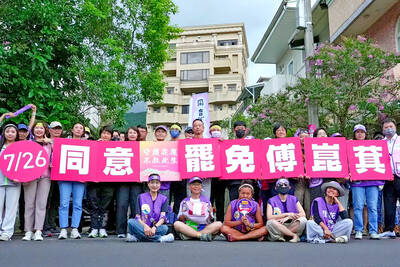
Hualien lawmaker Fu Kun-chi (傅?萁) is the prime target of the recall campaigns. They want to bring him and everything he represents crashing down. This is an existential test for Fu and a critical symbolic test for the campaigners. It is also a crucial test for both the Chinese Nationalist Party (KMT) and a personal one for party Chairman Eric Chu (朱立倫). Why is Fu such a lightning rod? LOCAL LORD At the dawn of the 2020s, Fu, running as an independent candidate, beat incumbent Democratic Progressive Party (DPP) lawmaker Hsiao Bi-khim (蕭美琴) and a KMT candidate to return to the legislature representing
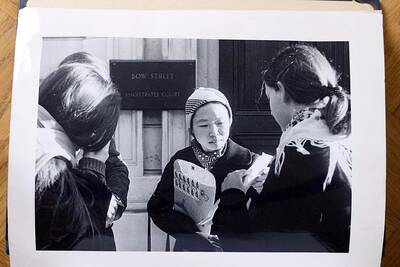
Fifty-five years ago, a .25-caliber Beretta fired in the revolving door of New York’s Plaza Hotel set Taiwan on an unexpected path to democracy. As Chinese military incursions intensify today, a new documentary, When the Spring Rain Falls (春雨424), revisits that 1970 assassination attempt on then-vice premier Chiang Ching-kuo (蔣經國). Director Sylvia Feng (馮賢賢) raises the question Taiwan faces under existential threat: “How do we safeguard our fragile democracy and precious freedom?” ASSASSINATION After its retreat to Taiwan in 1949, the Chinese Nationalist Party (KMT) regime under Chiang Kai-shek (蔣介石) imposed a ruthless military rule, crushing democratic aspirations and kidnapping dissidents from